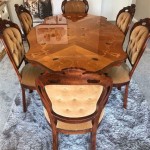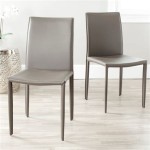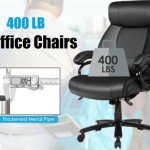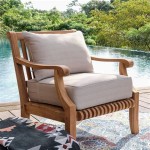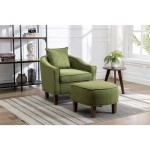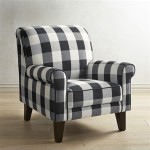Understanding Mid Back Chair Cushions for Outdoor Use
Outdoor seating is pivotal in enhancing the aesthetic and functional value of patios, decks, balconies, and gardens. While selecting outdoor furniture, the importance of cushions is often undervalued. However, cushions provide comfort, support, and a decorative touch that elevates the entire outdoor experience. Among various types of cushions, mid-back chair cushions have gained considerable popularity for their ergonomic design and versatility. This article will delve into the characteristics, benefits, and considerations associated with selecting appropriate mid-back chair cushions for outdoor environments.
A mid-back chair cushion is designed to support the lower and mid-back regions, offering a balance between support and freedom of movement. Unlike high-back cushions that extend to support the head and neck, mid-back cushions provide lumbar support without restricting upper body movement. This design makes them suitable for a wide range of outdoor activities, from reading and dining to relaxing and socializing. The dimensions of a typical mid-back chair cushion vary depending on the chair size and style. However, they typically measure between 18 to 22 inches in width and height, ensuring adequate coverage and comfort for most individuals.
Key Point 1: Material Selection for Durability and Comfort
The longevity and performance of outdoor mid-back chair cushions are directly linked to the materials used in their construction. Selecting the right materials is crucial for enduring the harsh elements of outdoor environments, including sunlight, rain, and temperature fluctuations. The two main components of a cushion are the outer fabric and the inner filling. Each plays a vital role in overall comfort, durability, and maintenance.
Outer Fabric:
The outer fabric serves as the first line of defense against the elements. Several fabric options are available, each with varying degrees of resistance to fading, water damage, and mildew growth. Acrylic fabrics, such as Sunbrella, are highly regarded for their exceptional UV resistance, ensuring that the cushions retain their color and integrity even after prolonged exposure to sunlight. These fabrics are also water-repellent and resistant to mildew, making them an excellent choice for humid or rainy climates. Polyester fabrics are another popular option, offering good UV resistance and water repellency at a more affordable price point than acrylics. However, they may not be as durable or fade-resistant as acrylics over time. Olefin fabrics are known for their stain resistance and durability. Often used in outdoor carpets, they can withstand heavy use and are easy to clean. Finally, solution-dyed fabrics, in which the color is added during the fiber manufacturing process, offer superior colorfastness compared to fabrics that are dyed after weaving.Inner Filling:
The inner filling of a cushion determines its level of comfort and support. Several options are available, each with varying degrees of resilience, density, and water resistance. Polyurethane foam is a common choice for its affordability and versatility. It provides good support and comfort but can degrade over time due to exposure to sunlight and moisture. Dryfast foam is specially designed for outdoor use, featuring an open-cell structure that allows water to drain quickly and air to circulate freely, preventing mold and mildew growth. This type of foam is ideal for cushions that will be exposed to rain or humidity. Polyester fiberfill, also known as batting, is a lightweight and affordable option. It provides good loft and comfort but may compress over time, requiring periodic fluffing or replacement. Down alternative fillings, such as shredded memory foam or recycled polyester fibers, offer a balance of comfort and durability. They are hypoallergenic and resistant to mildew, making them a good choice for individuals with sensitivities.Key Point 2: Ergonomic Design and Support
Beyond the choice of materials, the ergonomic design of mid-back chair cushions is critical for providing optimal comfort and support. A well-designed cushion should contour to the shape of the back, providing targeted support to the lumbar region and promoting proper posture. Several design features contribute to the ergonomic effectiveness of a cushion.
Lumbar Support:
Adequate lumbar support is essential for reducing back pain and promoting good posture. Cushions with built-in lumbar support, such as those with a raised or contoured section in the lower back area, can help maintain the natural curvature of the spine. This feature is particularly beneficial for individuals who spend extended periods sitting outdoors. Proper lumbar support helps to alleviate pressure on the spine and muscles, reducing fatigue and discomfort.Thickness and Density:
The thickness and density of a cushion affect its level of support and comfort. Thicker cushions generally provide more cushioning and support, while denser cushions offer better resistance to compression. However, the ideal thickness and density depend on individual preferences and the specific chair design. A cushion that is too thick may feel bulky or uncomfortable, while a cushion that is too thin may not provide adequate support. Experimentation with different thicknesses and densities is recommended to find the optimal balance.Shape and Contouring:
The shape and contouring of a cushion play a role in its ergonomic effectiveness. Cushions with curved or contoured surfaces can better conform to the shape of the back, providing more targeted support. Some cushions are designed with a slight angle or wedge shape to promote better posture and reduce pressure on the tailbone. The shape of the cushion should complement the shape of the chair back, ensuring a snug and comfortable fit.Secure Attachment:
A well-designed cushion should include features that ensure secure attachment to the chair. This prevents the cushion from slipping or sliding during use, which can be both uncomfortable and unsafe. Common attachment methods include ties, straps, and hook-and-loop fasteners. Ties are a traditional option, allowing for a customizable fit. Straps, often equipped with buckles or adjustable closures, provide a more secure attachment. Hook-and-loop fasteners, such as Velcro, offer a quick and easy way to attach and detach the cushion. The choice of attachment method depends on the chair design and personal preferences.Key Point 3: Maintenance and Care for Longevity
Proper maintenance and care are essential for extending the lifespan of outdoor mid-back chair cushions. Regular cleaning and protection from the elements can help prevent fading, staining, and mildew growth. Different materials require different cleaning methods, so it's important to follow the manufacturer's instructions.
Cleaning:
Regular cleaning is crucial for removing dirt, debris, and stains from outdoor cushions. Vacuuming cushions regularly can help prevent the buildup of dust and dirt. Spills should be cleaned immediately with a damp cloth and mild soap. For more stubborn stains, a specialized fabric cleaner may be necessary. Always test the cleaner on a small, inconspicuous area of the cushion before applying it to the entire surface. For machine-washable cushions, follow the manufacturer's instructions carefully. Avoid using harsh detergents or bleach, as these can damage the fabric. When washing cushions, use a gentle cycle and cold water. Tumble dry on low heat or air dry to prevent shrinkage.Storage:
Proper storage is essential for protecting outdoor cushions from the elements when they are not in use. During periods of prolonged rain or snowfall, it's best to store the cushions indoors or in a covered area. Cushions can be stored in a shed, garage, or storage bin. Before storing cushions, ensure that they are completely dry to prevent mildew growth. If indoor storage is not possible, consider using waterproof cushion covers to protect the cushions from rain and sunlight. Cushion covers are available in a variety of sizes and materials, providing a convenient and affordable way to extend the lifespan of outdoor cushions.Protection from Sunlight:
Prolonged exposure to sunlight can cause fading and degradation of outdoor cushion fabrics. To minimize the effects of sunlight, consider using outdoor umbrellas or awnings to shade the seating area. Rotating cushions periodically can also help to distribute wear and tear evenly. Applying a fabric protectant spray with UV inhibitors can provide an additional layer of protection against fading. These sprays are designed to block harmful UV rays and help the fabric retain its color and integrity. Reapply the protectant spray regularly, following the manufacturer's instructions.Mildew Prevention:
Mildew growth is a common problem for outdoor cushions, especially in humid climates. To prevent mildew, ensure that cushions are properly ventilated and allowed to dry completely after rain or washing. Avoid placing cushions in damp or shady areas. Regular cleaning with a mildew-resistant cleaner can also help prevent mildew growth. For cushions that are already affected by mildew, use a solution of bleach and water to clean the affected area. Always test the solution on a small, inconspicuous area of the cushion before applying it to the entire surface. Rinse the cushion thoroughly with water and allow it to dry completely.In conclusion, selecting and maintaining the right mid-back chair cushions for outdoor use involves careful consideration of materials, ergonomics, and care practices. By understanding the properties of different fabrics and fillings, selecting cushions with adequate lumbar support and secure attachment features, and implementing a regular cleaning and storage routine, individuals can ensure that their outdoor seating areas remain comfortable, inviting, and aesthetically pleasing for years to come. Regular maintenance helps to preserve the investment in outdoor furniture and enhances the overall enjoyment of outdoor spaces.

Honeycomb Outdoor Midback Dining Chair Cushion Textured Solid Charcoal Grey 21107s 101a138 The Home

Hampton Bay 20 In X 17 Cushionguard One Piece Mid Back Outdoor Dining Chair Cushion Almond Biscotti 8876hd 7213b The Home

Arden Selections 18 In X 16 5 Mid Back Outdoor Dining Chair Cushion Aqua Leala 2 Pack

Honeycomb Outdoor Midback Dining Chair Cushion Boheme

Arden 36 5 X18 Outdoor Mid Back Dining Chair Cushion Alana Blue Tile Uv Water Resistant Fade Proof

Rsh Décor Indoor Outdoor Tufted Style Mid Back Chair Cushion Navy Blue White Cabana Stripe Striped 42 L X 21 W Etsy

Hampton Bay 20 In X 17 Cushionguard One Piece Midback Outdoor Dining Chair Cushion Lake Twist Zz Mb 005 The Home

20 In X 17 Cushionguard One Piece Midback Outdoor Dining Chair Cushion Lake Twist

Arden Selections Mid Back 16 5 In X 18 Sapphire Blue Leala Patio Chair Cushion At Lowes Com

Arden Selections Mid Back 16 5 In X 18 Ruby Clarissa Patio Chair Cushion At Lowes Com
